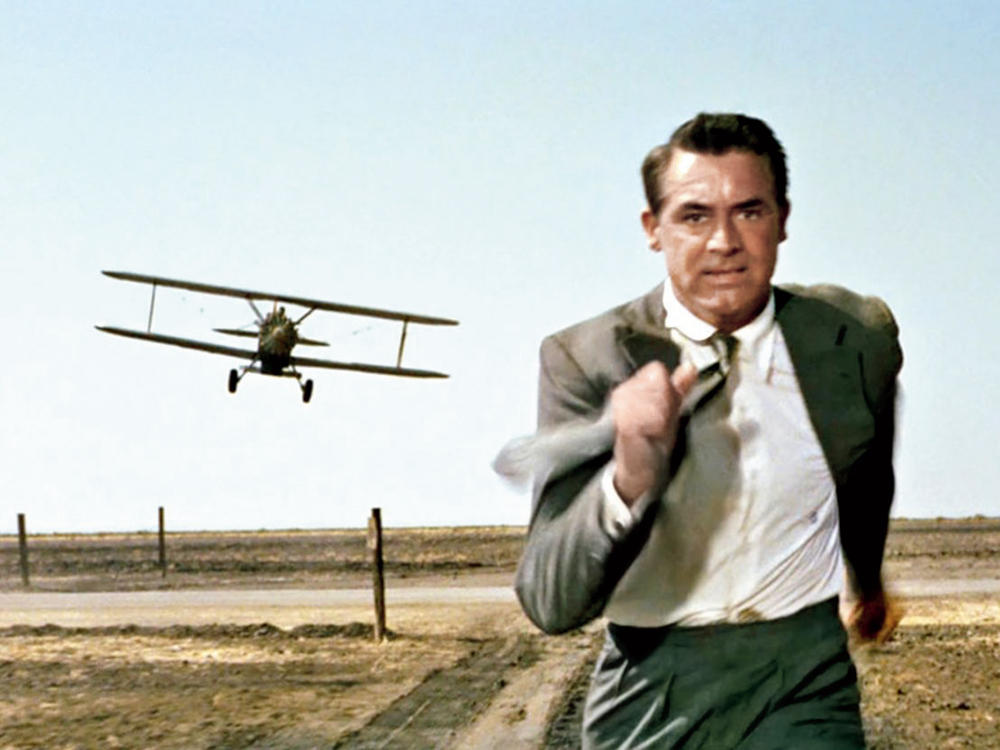It began with the teasing working title of “The Man in Lincoln’s Nose”, before taking its title from Hamlet’s quote expressing his madness, “I am but mad north-north-west. When the wind is southerly, I know a hawk from a handsaw.”
North By Northwest released on July 1, 1959, and went on to become the auteur Alfred Hitchcock’s most successful film in a career spanning six decades.
NBNW has it all — a brilliant title design by Saul Bass, a catchy score by Bernard Herrmann, a deft story of mistaken identity, espionage and honey traps, an assassination inside the UN building in New York, a thrilling climactic chase on Mount Rushmore and a metaphorical final shot. This was the film which, arguably, changed Hollywood thrillers from the dark, shadowy world of film noir of the 40s and 50s to the glamorous milieu of the James Bond spy adventures of the 60s.
The story is a “howcatchem”. It explores the frantic, precarious journey of advertising executive Roger O. Thornhill, mistaken to be a spy named George Kaplan, running from an international gang of crooks with indifferent government intelligence agents apathetic to his perils. While on the run he meets Eve Kendall, a beautiful but mysterious young woman who helps Thornhill, only to betray him to the gang. It is later revealed that Eve is an undercover agent, and the two unite in the end when he pulls her from imminent death to a bunk bed in a train. The final scene, of the train entering a tunnel, is a celebrated example of eroticism conveyed through allusion rather than crudity.
The genius of Hitchcock showed in his choice of the cast for the film. His favourite lead actor, Cary Grant, played Roger Thornhill, the everyman whose humdrum life is suddenly transformed into a whirlwind of adventure and romance, something we all fantasise about in our daily existence. Both the leading lady and the villain were cast against type. Eva Marie Saint, who had started her career in the gritty best picture Oscar winner On The Waterfront (for which she also won the Academy award for best supporting actress), played the femme fatale Eve Kendall, who falls for Thornhill, betrays him and, presumably, marries him at the end. The suave British actor James Mason, with his silky, smooth accent, played the villain Phillip Vandamm who, while ordering his henchman to “dispose of” somebody, states that he believes “in neatness”.
The most celebrated sequence in the film involves a crop dusting plane chasing and trying to kill Thornhill. Hitchcock lulls the audience into wondering what possibly the nattily dressed Thornhill could be in danger from, standing in the vast openness of a rural Indiana highway, with the plane flying in the distance. But then he creates a sense of foreboding in the form of a stranger who utters the memorable line, “That’s funny. That plane’s dusting crops where there ain’t no crops.” And then the plane turns around and starts coming towards Thornhill….
It won’t be wrong to compare the persona of the imaginary spy Kaplan to James Bond, complete with Kaplan’s own blonde-girl Eve. Some have even called it the first James Bond movie, a fitting compliment to the debonair Cary Grant who, incidentally, was Ian Fleming’s choice to play Bond. The Bond movie From Russia With Love paid tribute to the crop duster sequence by having a similar scene of a helicopter chasing Sean Connery with a similar fatal consequence.
For the trivia-minded, the sequence was also used back home for the forgettable Kishore Kumar starrer Bombay Ka Chor (1962). In fact, the shot of the plane crashing against a gas truck was taken directly from NBNW.
North By Northwest is an edge-of-the-seat rollercoaster entertainment in the truest sense of the term. If viewer entertainment is the benchmark for filmmaking skills, then NBNW is as close to perfection as a film could be. For the uninitiated, it stands as the perfect introduction to the world of Alfred Hitchcock.











